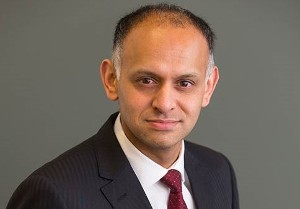
Westpac’s first Retail Spending Pulse analysing spending on customers’ credit and debit cards shows nominal spending in the three months to November was up just 3% compared to the same time last year. That is a sharp slowdown from the first half of the year when spending had been rising at an annual rate of about 9%.
As retail prices have increased by about 4% and the population by more than 2%, these spending trends imply weak per-capita spending, Westpac says.
Households are splashing out more cash but getting fewer goods in their shopping baskets. The slowdown is most notable in discretionary items.
This follows trends in the broader economy this year where households have increasingly focused on value for money.
Weakness
Westpac senior economist Satish Ranchhod says there’s been an especially sharp slowdown in spending on clothing, furnishings and recreational goods.
That chimes with anecdotes the bank has heard from retailers that spending during Black Friday and other sales through November was subdued, and households have been spending more on essentials and seeking value for money.
Restaurant spending fell by 6% over the past year while other entertainment services fell by 7% - comparing the three months to November to the same time last year.
Bucking the trend, there has been strong growth in areas related to tourism, such as airfares, up 7% and travel agents services up 16%.
The bank says it’s likely that ongoing financial pressures and lingering nervousness about the economic landscape will see many households keep their cards in their wallets through the Christmas shopping season.
That will be welcome news for the RBNZ which needs a cooling in domestic activity to get inflation back in the 1-3% band, before it commits to OCR cuts.
More pain next year but lower level
Meanwhile ASB expects the average household will have to stump up an extra $70 per week next year just to cover costs following a $115 weekly increase this year.
In its Household Living Cost Outlook, the bank says households have been acutely feeling the cost of living ‘squeeze’ but signs are brighter, with next year’s projected weekly increase, the lowest since 2020. Weekly cost increases for the average household peaked at just under $140 in 2022.
Next year’s increase is expected to be below the weekly rise in household disposable incomes.
These figures are for the average household, with some having to pay less, but others more, particularly those with large debt exposures.
The inflation outlook remains uncertain, but ASB senior economist Mark Smith expects the pace of cost increases to progressively slow, both in absolute terms and relative to household incomes.
“Cost movements will be uneven, with slowing increases for consumer goods but for still chunky rises in debt servicing and other consumer services.”
Despite warnings of impending doom and subdued consumer sentiment, the household sector has stayed afloat thus far, he says.
Solid growth in household incomes and the build-up of household savings post-Covid have increased the buffer available to some households. “Others, however, have not been as fortunate and with the labour market deteriorating, pockets of financial stress could grow”.
Adding to the challenges facing policymakers is that the battle to lower inflation back to 2% is far from over. The bank doesn’t expect further OCR hikes but acknowledges the RBNZ’s patience is wearing thin.
“Tangible progress will need to be made in lowering domestic inflation,” Smith says. “While households do not set prices, their actions will have a tangible influence.”





Comments
No comments yet.
Sign In to add your comment